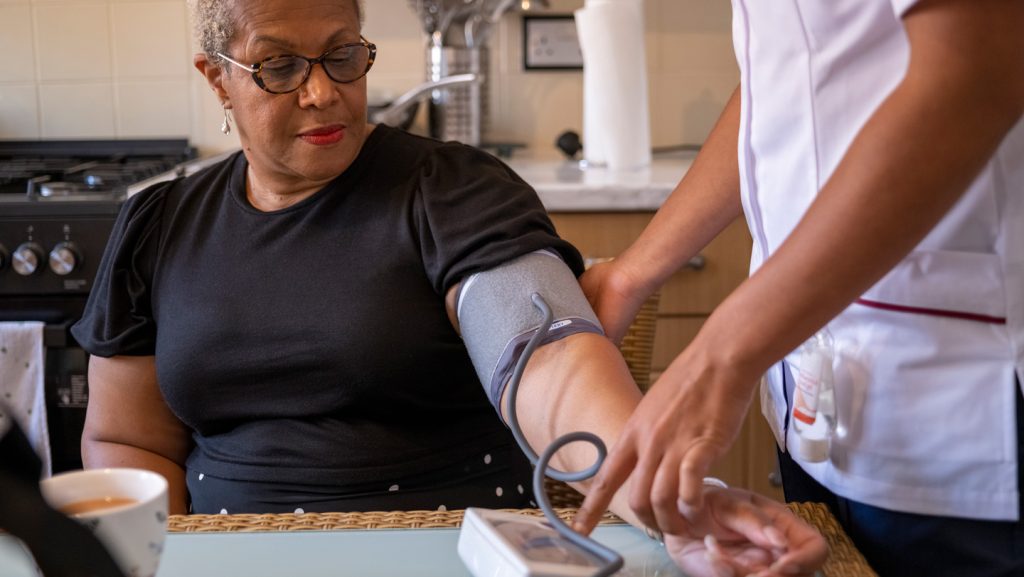Hope for High Blood Pressure Patients: New Drug Shows Promise
In a breakthrough for millions struggling with resistant hypertension, a new medication called baxdrostat has demonstrated significant potential in lowering blood pressure that remains stubbornly high despite standard treatments. Published in the New England Journal of Medicine on August 30, the results of a large clinical trial offer hope to the many patients whose blood pressure refuses to cooperate with existing medications.
High blood pressure, or hypertension, affects a staggering 1.3 billion people worldwide, yet about 80 percent don’t receive adequate treatment. This silent but dangerous condition increases risk of stroke, heart attack, and heart failure by putting excessive pressure on artery walls. Blood pressure readings consist of two numbers – systolic (the pressure when the heart beats) and diastolic (the pressure when the heart rests) – measured in millimeters of mercury (mm Hg). While healthy blood pressure typically falls below 120/80 mm Hg, readings of 130/80 mm Hg or higher indicate hypertension. One common cause is excess aldosterone, a hormone responsible for maintaining salt and water balance in the body. Baxdrostat works by specifically targeting and reducing aldosterone levels, preventing the fluid buildup that contributes to high blood pressure.
The 12-week Phase III trial involved nearly 800 patients with resistant or uncontrolled high blood pressure, with an average reading of 149/87 mm Hg at the start. The results were impressive: participants taking either 1 or 2 milligrams of baxdrostat alongside their current medications experienced an average drop of approximately 9-10 mm Hg more in seated systolic pressure compared to those given a placebo. Even more promising, a small subset of patients in a supplementary study saw their systolic pressure decrease by about 15 mm Hg when averaged over 24 hours. “What’s exciting about baxdrostat is that it avoids the problematic side effects of existing drugs like spironolactone – such as breast tenderness and reduced sexual function in men, or menstrual irregularities in women – while still effectively lowering blood pressure,” explains Dr. John Flack, an internal medicine specialist at Southern Illinois University in Springfield.
The trial demonstrated baxdrostat’s effectiveness across diverse patient populations. About 40 percent of patients taking the drug reached healthy systolic levels below 130 mm Hg, compared with only 19 percent in the placebo group. Dr. Flack notes that these benefits were consistent regardless of gender, age, or whether patients were taking two blood pressure medications or three or more, indicating the drug’s broad applicability. Yale University cardiologist Dr. Erica Spatz, who wasn’t involved in the study, described the results as “impressive and meaningful,” highlighting their particular significance for patients who have struggled to control their blood pressure with existing treatments.
Baxdrostat was generally well-tolerated by participants, with only mild side effects reported. Dr. Flack explains, “As expected, we saw mild increases in potassium, but far less than with spironolactone.” The kidney effects were minor and might actually prove beneficial by potentially reducing harmful hyperfiltration – a condition where the kidneys overwork by filtering more blood than normal. The trial also included an eight-week withdrawal phase that revealed something remarkable: patients who stopped taking baxdrostat experienced only a modest 1.4 mm Hg rise in systolic pressure on average, while those who continued treatment saw an additional 3.7 mm Hg drop. “Even at week 12, blood pressure in the baxdrostat group was still coming down,” Dr. Flack observes. “That kind of prolonged response is unlike any other blood pressure drug class we use.”
The prolonged effect of baxdrostat could prove particularly valuable in real-world treatment scenarios. “Adherence to blood pressure medications is often poor, so this kind of sustained effect is amazing,” Dr. Spatz notes. Both experts believe that the observed reductions could translate to meaningful decreases in the long-term risk of serious cardiovascular events like heart attack, stroke, and heart failure. Dr. Spatz emphasizes that current American Heart Association guidelines strongly focus on assessing overall cardiovascular risk and starting medications when necessary, using tools like the PREVENT calculator to estimate a person’s 10- and 30-year risk of heart disease. “For individuals at high cardiovascular risk as estimated using the PREVENT calculator, achieving a systolic pressure below 120 mm Hg is even more protective than targeting below 130 mm Hg,” she explains, suggesting that baxdrostat could become an important tool for patients needing powerful medications to reach these protective targets.
While AstraZeneca, the drug’s developer and study funder, plans to seek U.S. regulatory approval by late 2025, Dr. Spatz cautions that more research is needed to determine if baxdrostat could serve as a first- or second-line therapy and provide the same heart protection as current medications. “Even if approved,” she adds, “it must be combined with lifestyle changes, regular monitoring, and comprehensive care to fully reduce cardiovascular risk.” Despite these necessary cautions, the emergence of baxdrostat represents a potentially significant advancement in the treatment of resistant hypertension, offering new hope to millions who continue to struggle with this dangerous condition despite current therapies.


